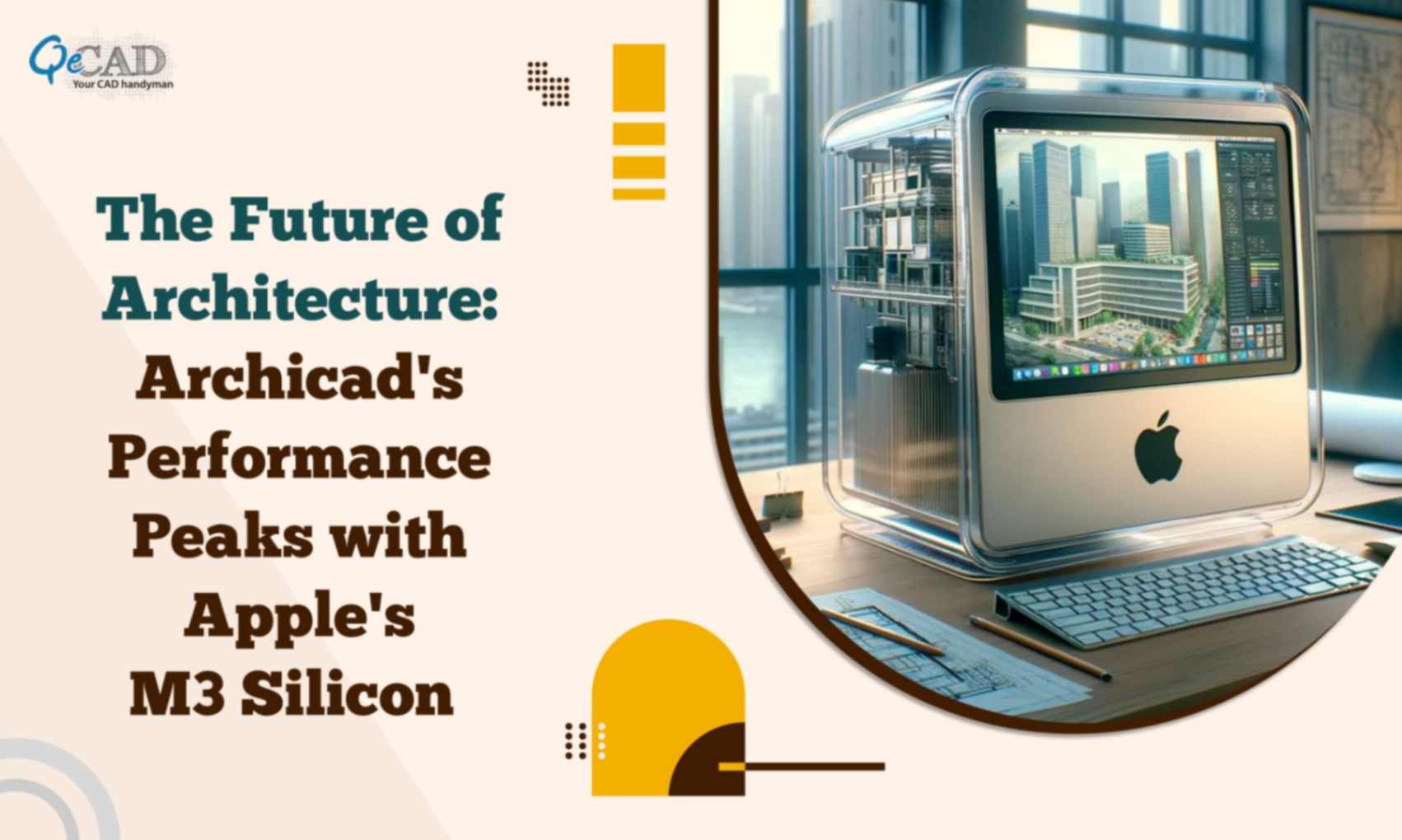
Introduction:
The tech and arch world have been abuzz with enthusiasm over the performance capabilities of Apple’s M-series silicon chips. With each iteration, Apple seems to go beyond the boundaries of what’s possible in terms of efficiency, speed, and overall computing power. Now, Graphisoft, the renowned developer of Archicad, has stepped forward to shed light on just how impressive these chips truly are. In this blog post, we’ll delve into the details of the benchmarks shared by Graphisoft, showcasing the remarkable performance of Archicad on Apple’s latest M3 silicon.
The Evolution of Apple Silicon:
Apple’s transition from Intel-based processors to its own custom silicon marked a significant milestone in the company’s history. The M1 chip, introduced in 2020, set a new benchmark for performance in the world of personal computing. Its successor, the M1 Pro and M1 Max, continued this trend, offering unparalleled power and efficiency in laptops and desktops.
Now, with the introduction of the M3 chip, Apple aims to further solidify its position as a leader in silicon innovation. Boasting enhanced performance cores, improved efficiency, and advanced graphics capabilities, the M3 chip promises to deliver an even more immersive computing experience.
Graphisoft’s Benchmark Insights:
As developers of Archicad, one of the leading architectural design software solutions, Graphisoft has a keen interest in optimizing performance for the latest hardware platforms. To that end, they conducted a series of benchmarks to evaluate the performance of Archicad running on Apple’s M3 silicon.
The results of these benchmarks were nothing short of impressive. Graphisoft found that Archicad exhibited remarkable responsiveness and speed when running on devices equipped with the M3 chip. Tasks such as model rendering, complex calculations, and real-time 3D visualization were completed with lightning-fast efficiency, demonstrating the raw computational power of Apple’s latest silicon.
One of the key highlights of the benchmarks was the seamless integration between Archicad and the M3 chip’s advanced graphics capabilities. Architects and designers could manipulate intricate 3D models with ease, thanks to the chip’s high-performance GPU cores. This level of responsiveness not only enhances productivity but also unlocks new creative possibilities for users of Archicad.
Furthermore, Graphisoft observed significant improvements in energy efficiency when running Archicad on the M3 chip. This means users can enjoy extended battery life on compatible devices without compromising on performance, making it an ideal choice for professionals who need to work on-the-go.
Graphisoft’s Comparative Performance Data:
In addition to the overall performance improvements observed, Graphisoft shared insightful comparative data between Archicad running on the new M3 Max chip and an Intel Core i7-based iMac. According to the company’s findings, the M3 Max chip exhibits remarkable speed gains across various tasks. Compared to the Intel Core i7-based iMac, the M3 Max chip boasts:
- File opening speeds now reach up to 2.5 times faster.
- Section generation and display are now accelerated by up to 3 times.
- Documentation layout updates and display are now completed up to 3 times faster.
- Rendering with Cineware and Redshift engines is now up to 2 times quicker.
These staggering performance enhancements underscore the transformative impact of Apple’s M3 silicon on the efficiency and productivity of architectural workflows.
Implications for the Architecture Industry:
The implications of Graphisoft’s benchmark results extend far beyond the realm of hardware performance. For architects, designers, and other professionals in the architecture industry, the ability to harness the full potential of Apple’s M3 silicon opens up new opportunities for innovation and collaboration.
With Archicad running seamlessly on Apple’s latest hardware, architects can bring their visions to life with greater speed and precision. Complex designs can be iterated upon more rapidly, allowing for faster decision-making and ultimately, more efficient project delivery.
Moreover, the compatibility between Archicad and Apple’s M3 chip facilitates seamless collaboration across teams. Whether working remotely or in a collaborative studio environment, architects can share and review project files with ease, knowing that performance will not be compromised.
Looking Ahead:
As technology continues to evolve at a rapid pace, the partnership between Graphisoft’s Archicad and Apple’s M3 silicon represents a glimpse into the future of Architectural BIM Services. With each advancement in hardware and software integration, architects and designers are empowered to push the boundaries of creativity and innovation.
As Graphisoft continues to optimize Archicad for the latest hardware platforms, we can expect even greater levels of performance and efficiency in the years to come. The synergy between software and silicon will undoubtedly drive transformative change in the architecture industry, enabling BIM Outsourcing Company to achieve new heights of excellence in their work.
Conclusion:
The benchmarks shared by Graphisoft underscore the transformative impact of Apple’s M3 silicon on the performance of Archicad. With unparalleled speed, efficiency, and graphics capabilities, the M3 chip expands horizons for architects and designers aiming to stretch the limits of their artistry. With the continuous advancement of technology, the partnership between hardware and software will play a crucial role in transforming the future of architectural design.
